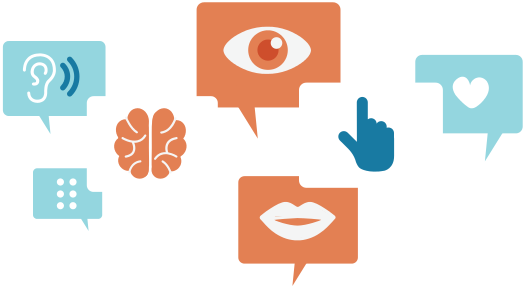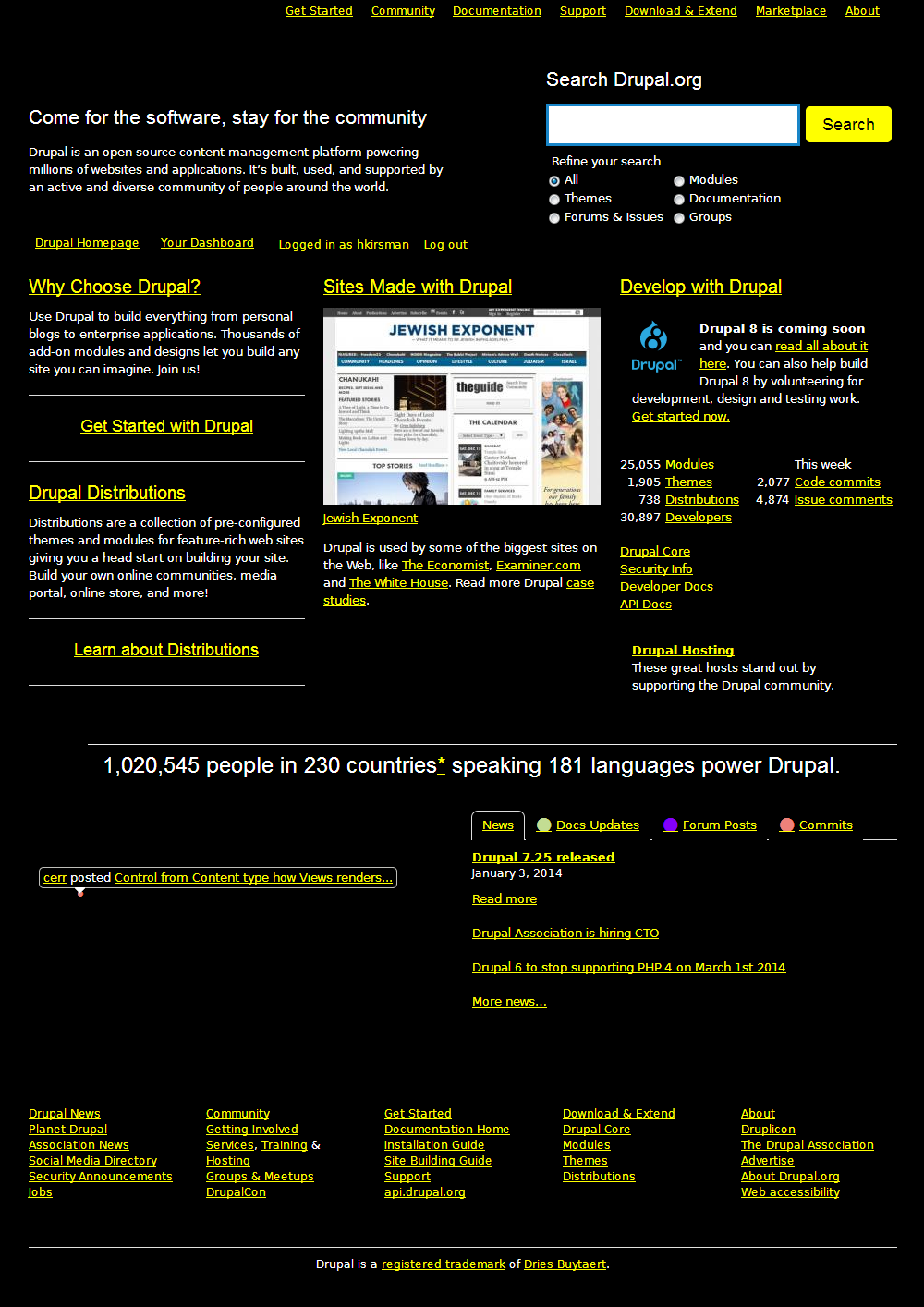Just like land, air, and water are meant for everyone, the web was designed to work for all people and expel any hindrance, irrespective of the surroundings and capabilities of people. But the effect of incapacity (of individuals) in the light of the fact that the web standards don’t include all in itself has become a barrier. Creating quite the paradox in the situation.

Before completing this blog, my ignorance led me to believe that web accessibility was limited to ‘accessibility only for people with disability’. Another thing that I was coxed to believe was that it is almost synonymous with visibility issues. But it is as much for a person with auditory disabilities as it is for a person with cognitive or neurological disabilities. However, I realized I was not the only one associating such wrong notions with disabilities and web accessibility.
Lack of awareness and taboos associated with disabilities often mislead us.
Ensuring that people with disability have equal and inclusive access to the resources on the web, governments and agencies follow certain guidelines in order to establish equal accessibility for all without any bias.
What are Web Accessibility Standards and why do they matter?
The Web Content Accessibility Guidelines (WCAG) explains how the web content be made more accessible to people. Here the word "content" refers to any and every kind of information in a web page, such as text (include heading and captions too), images, sounds, codes, markup - anything that defines the layout and framework.
“WCAG is developed through the World Wide Web Consortium process with a goal of providing a single shared standard for web content accessibility that meets the needs of individuals, organizations, and governments internationally.”
Take examples of physical infrastructures like ramps and digital vision signboards, which can be used by anyone, in a similar fashion web accessibility is for everyone.
When you go out in the noon, the level of contrast can be an issue as much for a person with 6/6 vision as it can be for a person with visibility issues. Or say, older people (due to aging) face problems with changing abilities, as much as people with “temporary disabilities” such as a broken arm or lost glasses. Thus, not only web accessibility standards ensure justice for people with disability but, it is inclusive for all.
According to the Convention on the Rights of Persons with Disabilities by the United Nations, enjoying equal human rights is a fundamental freedom. To ensure the dignity of people with disability is not a subject of ridicule, governments across the globe signed a treaty for easy web accessibility.
How does Drupal help?
A person may face an issue either when building a website or when using it. The WCAG ensures that both the times the guidelines are followed. The World Wide Web Consortium (W3C) guidelines are then divided into two: ATAG 2.0 and WCAG 2.0. Authoring Tool Accessibility Guidelines (ATAG 2.0) addresses authoring tools and Web Content Accessibility Guidelines (WCAG 2.0) addresses Web content and is used by developers, authoring tools, and accessibility evaluation tools.
Drupal conforms to both the guidelines. The initiative started with Drupal 7 accessibility and the community has been committed to ensuring that accessibility for all.
What Drupal does...
The community has an accessibility team which works to identify the barriers both at the code level and the awareness level to resolve them. As a person using assistive technologies to browse the web, Drupal is built to encourage and support the semantic markup (which comes out-of-box in Drupal 8 now).
One can realize that the improvements are meant for both the visitor and administrator in the:
- Color contrast and intensity
- Drag and Drop functionality
- Adding skip navigation to core themes
- Image handling
- Form labeling
- Search engine form and presentation
- Removing duplicate or null tags
- Accessibility for Developers
Modules For Accessibility
Following are some of the Drupal modules which will assist you in keeping up with the accessibility standards.
- Automatic Alt text
The basic principle at work here is the idea of easy perceivability. Any and every information should be, thus, presented in such a way that is easily perceivable to the user. It is required for any non-text information like images and video to describe the content in the form of text for the screen readers to read it.

The Automatic Alt text module automatically generates an alternative text for images when no alt text has been provided by the user. This module works great for the websites and portals with user-generated content where the users may even not be aware of the purpose and importance of the Alternative text.
It describes the content of the image in one sentence but it doesn’t provide face recognition.
- Block ARIA Landmark Roles
Inspired by Block Class, Block ARAI Landmark Roles adds additional elements to the block configuration forms that allow users to assign a ARIA landmark role to a block.
- CKEditor Abbreviation
The CKEditor Abbreviation module adds a button to CKEditor which helps in inserting and editing abbreviations in a given text. If an existing abbr tag is selected, the context menu also contains a link to edit the abbreviation.
Abbr tag defines the abbreviation or an acronym in the content. Marking up abbreviations can give useful information to browsers, translation systems, and help boost search-engines.
- CKEditor Accessibility Checker
The CKEditor Accessibility Checker module enables the Accessibility Checker plugin in your WYSIWYG editor. A plugin, the module lets you inspect the accessibility level of content created and immediately solve any accessibility issues that are found.
- High Contrast
On April 13, 2011, Joseph Dolson published an article "Web Accessibility: 10 Common Developer Mistakes" stating the most common mistakes related to web accessibility and quoted that most of the issues have "more to do with a failure to understand what constitutes accessible content than with a failure to understand the technology"In most of the surveys, poor contrast level is often cited as the most commonly overlooked feature by the developers.

High Contrast module, provides a quick solution to allow the user to switch between the active theme and a high contrast version of it helping them pull out of the problem.
-
htmLawed
According to the "Ten Common Accessibility Problems" an article by Roger Hudson, failure to use HTML header elements appropriately is one of the key accessibility issues.The htmLawed module utilizes the htmLawed PHP library to limit and filter HTML for consistency with site administrator policy and standards and for security. Use of the htmLawed library allows for highly customizable control of HTML markup.
-
Style Switcher
The Style Switcher module takes the fuss out of creating themes or building sites with alternate stylesheets. Most of the accessibility issues have been confronted at the theming level. With this module, themers can provide a theme with alternate stylesheets. Site builder can add other alternate stylesheets right in the admin section to bring it under the right guidelines of accessibility. Allowing special styling of some part of the site, the module presents all those styles as a block with links. So any site user is able to choose the style of the site he/she prefers. -
Text Resize
The handiest feature giving the end users just the right autonomy to resize the text as per their comfort of the eyesight. The Text Resize module provides the end-users with a block that can be used to quickly change the font size of text on your Drupal site.

It includes two buttons that can increase and decrease the size of the printed text on the page.
-
Accessibility
A module for the developer, Accessibility module gives you a list of available Accessibility tests, (most of which are) aligned with one or more guidelines like WCAG 2.0 or Section 508.It immediately informs the site maintainer about the missing an “alt” attribute in an image, or if the headers are used appropriately. Further, each test can be customized to fit your site’s specific challenges, and customize messages users see for each test so that you can provide tips on fixing accessibility problems within the context of your site’s editing environment.
Drupal 8 Features for Accessibility
Other than the modules that can assist you to overcome web compatibility issues, here is a list of top Drupal 8 features for easier web accessibility.
- Semantics in the Core
When an assistive device scans a web page for information, it extracts the data about the Document Object Model (DOM), or the HTML structure of the page. No further information is read by the screen reader.
Often these assistive devices only allow a user to select to read the headings on the page or only the links. It prioritizes according to the hierarchy in which the headings and links are presented making browsing easier for users of assistive devices.Drupal 8 is based on HTML5. Presenting new and better semantic components HTML5 is, in fact, one of five major initiatives outlined in Drupal 8 development. It allows theme developers to control where to use the new semantic elements and opt out entirely if they so choose.
When we compose semantically correct HTML, we’re telling the browser and the assistive technology what type of content it is managing with and how that information relates to other content. By doing this, assistive technology is all the more effortlessly ready to carry out its activity since it has a structure that it can work with.
- Aural Alerts
Often page updates are expressed visually through color changes and animations. But listening to a site is a very different experience from seeing it, therefore, Drupal provides a method called “Drupal.announce()”. This helps make page updates obvious in a non-visual manner. This method creates an aria-live element on the page.
This also lets the user know of any alert box appearing along with providing instructions to screen reader users about the tone as well. Text attached to the page is read by the assistive technologies. Drupal.announce accepts a string to be read by an audio UA.
- Controlled Tab Order
The accessibility issues also crop when a user uses different mediums while navigating the web. Not every user uses a mouse to navigate the website. The TabbingManager, in Drupal, is an awesome medium to direct both non-visual and non-mouse users to access the prime elements on the page in a logical order. It, thus, permits more control when exploring complex UIs.
The tabbing manager helps in defining explicit tab order. It also allows elements besides links and form to receive keyboard focus. Without breaking the tab order it places the elements in a logical navigation flow as if it were a link on the page.
- Accessible Inline Form Errors
It is important to provide the necessary feedback to users about the results of their form submission. Both the times when successful and when not. This incorporates an in-line feedback that is typically provided after form submission.
Notifications have to be concise and clear. The error message, in particular, should be easy to understand and provide simple instructions on how the situation can be resolved. And in case of successful submission, a message to confirm would do.Drupal forms have turned out to be impressively more open to the expansion of available inline form errors. It is now easier for everyone to identify what errors they might have made when filling in a web form.
- Fieldsets
Fieldset labels are utilized as systems for gathering related segments of forms. Effectively implemented <fieldset> label gives a visual diagram around the shape field gathering. This can, to a great degree, be valuable for individuals with cognitive disabilities as it viably breaks the form into subsections, making it easier to understand.
Drupal presently uses fieldsets for radios & checkboxes in the Form API. This helps towards additionally upgrading forms in Drupal.
Conclusion
However good the features Drupal offers, in the end, it is up to the organizations to strategize and build the websites and applications around the web accessibility.
We ensure that our different teams and interaction work together in order to make the Web more accessible to people with disabilities. At OpenSense Labs we design and develop the web technologies to ensure universal accessibility. Connect with us at [email protected] to make the web a better place.
Subscribe
Related Blogs
Inside the Drupal AI Summit: Themes, Speaker and What To Expect

“ The web is changing fast, and AI is rewriting the rules. It writes content, builds pages, and answers questions directly,…
FOST and Drupal AI Initiative: Next Era of Responsible AI

Three years after the launch of generative AI tools marked a new age for artificial intelligence, almost 90% of survey…
Drupal AI Ecosystem Part 5: AI Content Suggestions

Drupal has steadily evolved from being just a content management system into a flexible platform that incorporates emerging…




